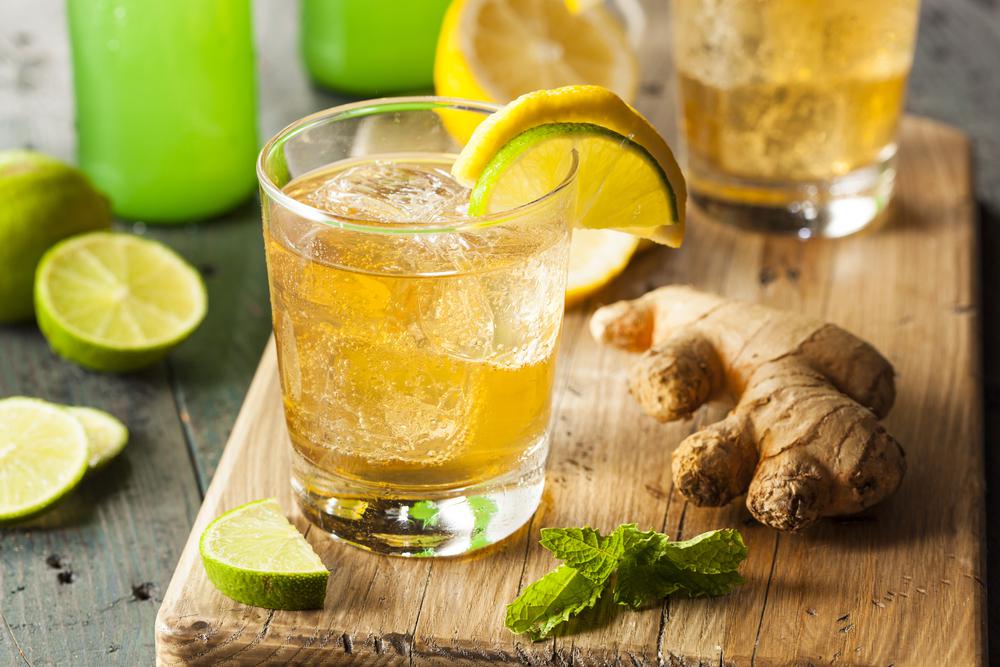This is one in an occasional series of posts about Drynuary, the practice of not drinking alcohol in January.
I gather that some of you are taking the first month of the year off from drinking, and I think that’s cute. This practice—known by the cumbersome portmanteau Drynuary—has gained sufficient popularity to rate as a kind of ritual, and that popularity is symptomatic of a food culture in which consumption and morality are growing ever more intimately intertwined. You are what you eat. Or what you don’t drink, in this case, of course, as if a secular Lent and lifestyle cleanse might bring one closer to whatever the late-capitalist equivalent of spiritual perfection is.
Hey, your body, your rules. Far be it from me to suggest that, if the goal of Drynuary is to repent for the excesses of the holiday season, well, maybe you should have paced your eggnog intake better in the first place. Nor is it my place to observe that—if y’all really want to prove your talents for self-restraint, or to assure yourselves that you are not lushes, by reducing your annual drink intake by eight percent—well, you might do better by reserving half of one beer from each six-pack you purchase for use as shampoo.
It is, however, my place to alleviate tedium. The dullness of sitting buzzless among your unsober friends I can nothing do about, but all those club sodas-with-lime must be feeling pretty dreary right now. Thus, here are three simple suggestions for drinks that, though not adult beverages, are agreeably grown up.
Ginger ale. Invented in the 1800s, possibly by one Dr. Thomas Cantrell, ginger ale is without parallel in its ability to calm the stomach while exciting the tongue. To take your ginger ale game up a notch, seek out a brand that abjures high-fructose corn syrup in favor of cane sugar or some such. To take your game up two notches, add a quarter ounce or more of lemon juice to your glass. For a three-notch night, toss in a few dashes of aromatic bitters, such as Angostura.
DISCLAIMER: Angostura is 44.7 percent alcohol, and to consume it will be to violate the letter of your self-imposed law, if not the spirit. I mean, we are talking a trace amount of hooch here, and though I wouldn’t hesitate to serve a ginger ale so doctored to a pregnant woman or a child, I would on principle avoid serving one to a chip-carrying recovering alcoholic, instead seeking out a bitters relying not on alcohol but on glycerin.
The Shirley Temple. Engaged in an ongoing quest to become an authority on this kiddie classic, I recently crafted a Shirley Temple punch recipe: One 24-ounce bottle of Pom, one 12-ounce bottle of Boylan’s Black Cherry soda, 1½ to 2 liters of Whole Foods ginger ale (according to taste). You chill the ingredients, combine them over an ice block in a punch bowl, decorate the potion with thin orange wheels, and serve, garnishing each serving with one Luxardo cherry, or more, at the request of any drinker who knows the magic word. I wrote this recipe for a four-year-old’s birthday party—but I figure you Drynuaryists will find it useful, especially because the rest of us will seem much less annoying if you avoid us altogether and socialize exclusively with your own kind.
If you have leftover punch, put it in a pot on the stovetop and reduce it to a syrup to be substituted for grenadine in ripe variations on adult beverages.
Honey & Spice. This one I discovered paging through one of Food & Wine’s annual cocktail guides. An homage to Orange Julius, it involves grapefruit juice, lime juice, honey syrup, and allspice syrup; that last ingredient requires a bit of labor, true, but I assume that you’ve freed up more than a bit of extra time this month, having temporarily renounced sitting on a barstool talking trash.
I include the Honey & Spice here to indicate that a happy consequence of the ongoing cocktail renaissance is an emerging mocktail naissance. More than ever, talented bartenders delight in banging out a drink that will not bang up a drinker, and bars of a certain caliber have taken to advertising such offerings. A visit to the NoMad Bar in Manhattan reveals a section of the menu given over to “soft cocktails” such as La Piña, made with jalapeño-infused agave syrup, pineapple juice, and lime juice, which can be yours for the almost-not-contemptible price of $8.
As you can see, there is no reason for a Drynuary observer to subject her palate to strict aridity, and there is no end to the possibilities for building sophisticated non-alcoholic concoctions. The only problem with these drinks is naming them. The best mocktail name of all time—Abstinence on the Beach—is already taken, alas. But the NoMad acquits itself well with the name of another drink that seems to honor everyone’s favorite mall-loitering pick-me-up, referring to a compound of orange juice, cream, and orange blossom water as a Cease & Desist.
Previously:
People Shouldn’t Ask Why I’m Not Drinking—but They Do. Here’s How I Respond.
Why I’ve Given Up Alcohol Every January for the Last Eight Years
What a Psychologist Specializing in Addiction Treatment Thinks About Drynuary
Actually, Not Drinking in January Is a Great Idea
